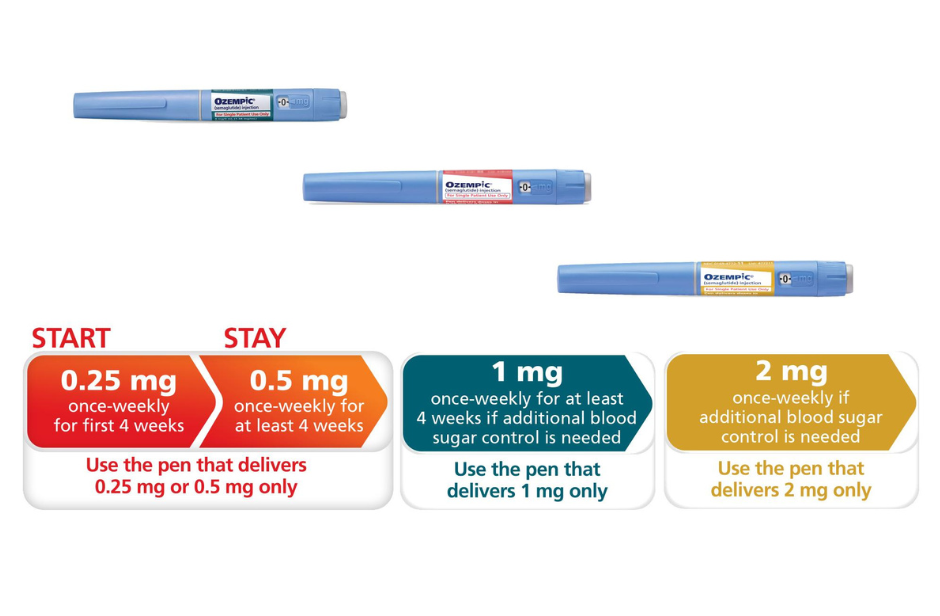Ozempic Weight Loss Medication
- Services
- Ozempic Weight Loss Medication
In the battle against obesity, finding effective weight loss solutions can be a daunting challenge. However, with the introduction of medications like Ozempic, there is renewed hope for those struggling to shed excess weight. Ozempic is a breakthrough medication that has shown remarkable results in aiding weight loss, alongside its primary purpose of managing type 2 diabetes.
Ozempic, also known by its generic name, semaglutide, is an injectable medication approved by the U.S. Food and Drug Administration (FDA) for the treatment of type 2 diabetes. However, it has gained considerable attention for its remarkable off-label effect as a potent weight loss aid.

Ozempic® contains the active ingredient semaglutide. Ozempic® is used to lower blood sugar (glucose) in adults with type 2
diabetes mellitus.
Do not use if you have ever had an allergic reaction to semaglutide or any of the ingredients listed at the end of the CMI.
Talk to your doctor if you have any other medical conditions, take any other medicines, or are pregnant or plan to become
pregnant or are breastfeeding.
Ozempic, or semaglutide, is an FDA-approved medication primarily used to manage type 2 diabetes. It aids weight loss by mimicking the action of GLP-1, a hormone that reduces appetite, slows stomach emptying, and improves insulin sensitivity.
No, Ozempic is a prescription medication. Its use should be supervised by a healthcare professional. Not everyone is a suitable candidate.
Common side effects include mild nausea, vomiting, or diarrhea. These side effects typically improve over time. However, it's crucial to discuss any side effects with your healthcare provider.
Ozempic is primarily approved for diabetes management. While it's prescribed off-label for weight loss, its primary indication is diabetes. Consult your healthcare provider to determine if it's appropriate for you.
Your healthcare provider will guide you on when and how to discontinue Ozempic safely. It's important to follow their instructions to maintain your weight loss and overall health.
To prevent infection, it is recommended to refrain from touching or applying to the treated area for at least six hours after the procedure. It is normal for the treated areas to appear slightly raised and bumpy immediately after the treatment, but this should subside by the following day
Copyright © 2025. All Right Reserved.
Dr Sima Aesthetics
Typically replies within minutes
Hello there!
Welcome to Dr Sima Aesthetics.
How can we help you?
WhatsApp Us
🟢 Online
Hey, How can we help you?